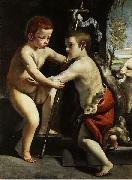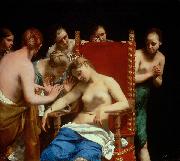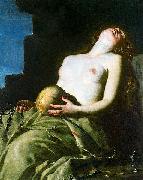|
||||||||||
|
|
||||||||||
|
Jesus and John the Baptist as children Gemälde ID:: 81059 Siehe Galerie in Schweden |
Jesus and John the Baptist as children Jesus and John the Baptist as children, oil on canvas, 126 x 93 cm Date 17th century cjr Jesus_and_John_the_Baptist_as_children,_oil_on_canvas,_126_x_93_cm_ Date_17th_century _ cjr |
|||||||||
|
|
||||||||||
|
Death of Cleopatra Gemälde ID:: 81557 Siehe Galerie in Schweden |
Death of Cleopatra nach 1659 Medium Oil on canvas Dimensions Deutsch: 153 x 168,5 cm cjr nach_1659_ Medium_Oil_on_canvas _ Dimensions_Deutsch:_153_x_168,5_cm__ cjr |
|||||||||
|
|
||||||||||
|
Maddalena svenuta Gemälde ID:: 81865 Siehe Galerie in Schweden |
Maddalena svenuta ol/tl, 86x72 cm Galleria Nazionale d'Arte Antica, Roma Date 1663 cyf ol/tl,_86x72_cm_Galleria_Nazionale_d'Arte_Antica,_Roma _ Date_1663 _ cyf |
|||||||||
|
|
||||||||||
|
Death of Cleopatra Gemälde ID:: 85569 Siehe Galerie in Schweden |
Death of Cleopatra nach 1659 Medium Oil on canvas cyf nach_1659_ Medium_Oil_on_canvas _ cyf |
|||||||||
|
|
||||||||||
|
La morte di Cleopatra Gemälde ID:: 95764 Siehe Galerie in Schweden |
La morte di Cleopatra c. 1660 Medium ol/tl Dimensions 120 x 158 cm (47.2 x 62.2 in) cyf c._1660_ Medium_ol/tl_ Dimensions_120_x_158_cm_(47.2_x_62.2_in)_ cyf |
|||||||||
|
|
||||||||||
| Vorheriger Künstler Nächster Künstler | ||||||||||
|
|
||||||||||
| Guido Cagnacci | ||||||||||
| (January 19, 1601 - 1663) was an Italian painter of the late-Baroque period, belonging to the Forle painting school and to the Bolognese School. Born in Santarcangelo di Romagna near Rimini, he died in Vienna in 1663. He worked in Rimini from 1627 to 1642. After that, he was in Forle, where absorbed the lesson of the Melozzo's painting. Prior to that he had been in Rome, in contact with Guercino, Guido Reni and Simon Vouet. He may have had an apprenticeship with the elderly Ludovico Carracci. His initial output includes many devotional subjects. But moving to Venice under the name of Guico Baldo Canlassi da Bologna, he renewed a friendship with Nicolas Regnier, and dedicated himself to private salon paintings, often depicting sensuous naked women from thigh upwards, including Lucretia, Cleopatra, and Mary Magdalene.This allies him to a strand of courtly painting, epitomized in Florence by Francesco Furini, Simone Pignoni and others. In 1650, he moved to Venice. In 1658, he traveled to Vienna, where he remained under patronage of the emperor Leopold I. His life was at times tempestuous, as characterized by his failed elopement (1628) with an aristocratic widow. Some contemporaries remark him as eccentric, unreliable and of doubtful morality. He is said to have enjoyed the company of cross-dressing models. | ||||||||||
|
|
||||||||||
IntoFineArt Co,.Ltd.














